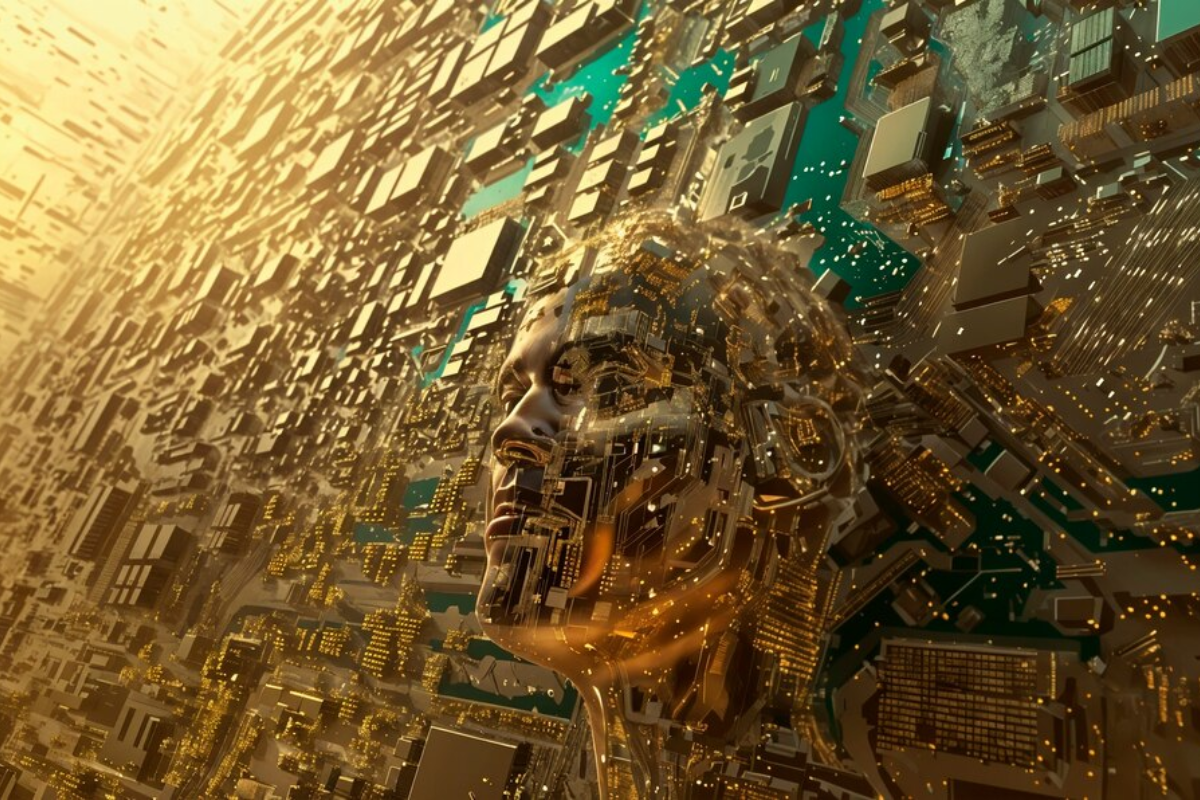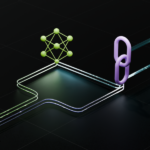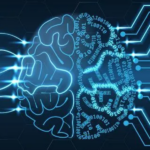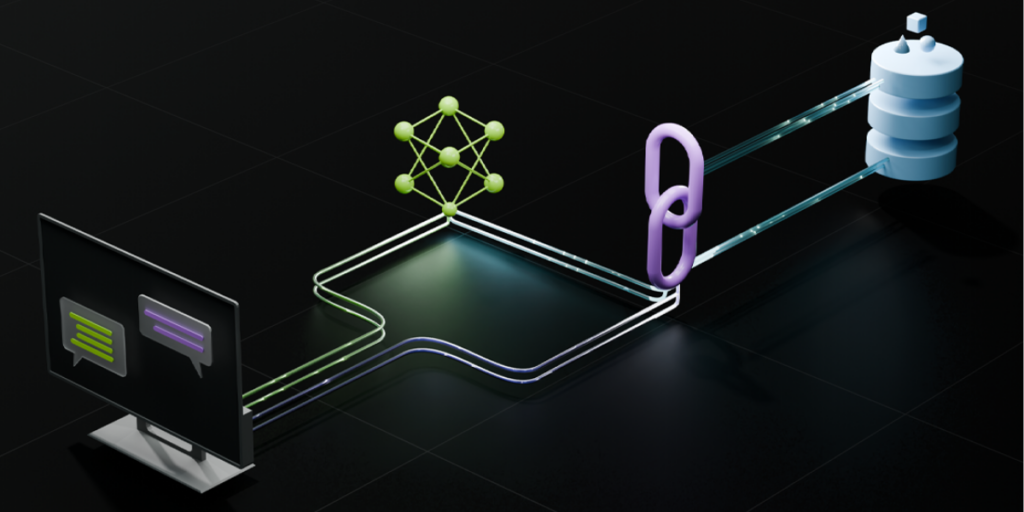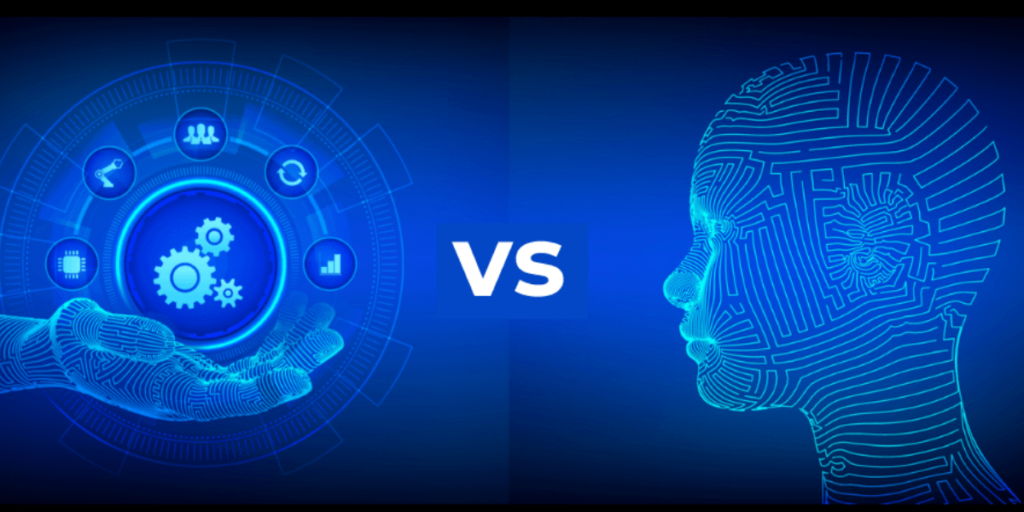Transformers and deep learning have revolutionized the field of machine learning by offering a range of models with distinct characteristics and capabilities. When factors such as the number of parameters activated functions, architectural details, context sizes, pre-training data corpus, and the languages used for training distinguish the models, an often neglected aspect that could significantly influence their performance is their training process. In this blog, we will delve into the three broad categories of transformers in AI models based on their training methodologies: GPT-like (auto-regressive), BERT-like (auto-encoding), and BART/T5-like (sequence-to-sequence).
Ultimately, understanding the different models and then using these models for your specific requirements is an absolute must. Many try to incorporate GPT-4 into every possible language-related application regardless of its suitability. In this blog, you’ll better understand the different types of Transformers and the times when each will be the most effective.
Difference Between Transformers and GANs?
The Transformer architecture introduced several revolutionary technologies that differentiated it from Generative AI techniques such as GANs or VAEs. Transformer models can recognize the interplay of words within sentences and capture the context. In contrast to traditional models that process steps step-by-step, Transformers in AI deal with all the parts simultaneously, making them more efficient and compatible with GPUs.
Imagine the first time you saw Optimus Prime change from being a pickup truck to an impressive Autobot leader. This is the leap AI made in transitioning from conventional models towards the Transformer architecture—numerous projects, including Google’s BERT and OpenAI’s GPT-3 and GPT-4. Two of the most effective artificial intelligence models, the generative AI transformer model, is built on the Transformer structure. These models can produce text with human-like characteristics, assist with programming tasks, translate from one language to the next, and answer questions about almost every subject.
In addition, it is worth noting that the Transformer architecture’s flexibility extends beyond text, offering promise in areas such as vision. Transformers’ capacity to learn from massive data sources and customize for specific tasks, such as chat, has brought about the new age of NLP, including cutting-edge tools such as ChatGPT. In a nutshell, with Transformers, there’s more to it than meets the eye!
Understanding Transformers in AI
A groundbreaking research paper called “Attention is All You Need” revealed Transformers in 2017. They have since become the foundation of numerous state-of-the-art AI models. Contrary to prior sequential models, transformers handle the input information in parallel, which makes them highly efficient when processing large amounts of data and more complex tasks.
The key technology behind transformers is the self-awareness mechanism, which allows the model to evaluate the importance of various input parts before making predictions.
Vanilla Transformers
The transformer model that was first developed, also known as a vanilla transformer, established the basis for subsequent variations. It uses self-attention to process data input, making it flexible for various AI tasks. Common applications include machine text generation, translation, and sentiment analysis. Vanilla transformers in AI have created the foundation for more sophisticated models by demonstrating the power of self-awareness systems.
BERT (Bidirectional Encoder Representations of Transformers in AI)
The BERT, first introduced by Google in 2018, was an essential breakthrough in the natural processing of language. BERT models have been trained with a vast textual corpus. They are bidirectional. This means that they consider the complete context of a word when processing it. The model can excel in answering questions, classification, and identification. BERT-based models have dramatically enhanced the accuracy of understanding language and generation.
GPT (Generative Pretrained Transformers)
GPT models are developed to help you understand and create text. They have become more sophisticated, beginning with GPT-1 and progressing towards GPT-2 and GPT-3. They can produce consistent and relevant texts, making them useful in chatbots, content creation, and creative writing. GPT-3, with its 175 billion parameters, is among the most influential language models ever built and shows the enormous potential of the generative transformers.
T5 (Text-to-Text Transfer Transformer)
T5 models are distinct in defining every NLP task as text-to-text tasks. Whether the task is translation, summary, or answering questions, T5 employs a common framework. This method makes it easier to train and deploy models since the same model structure can be used for different tasks in the language field, increasing efficiency and effectiveness.
Vision Transformers (ViTs)
Although transformers AI model are typically connected to the natural processing of language vision, transformers in AI are created for tasks involving images. Models such as the Vision Transformer (ViT) apply the transformer’s architecture to images, making them highly efficient in image classification and object detection. They are even producing textual descriptions for images. ViTs are gaining prominence in computer vision and have demonstrated the flexibility of transformers in addition to text.
Reinforcement Learning Transformers (RLT)
Reinforcement Learning Transformers incorporate reinforcement learning and transformer designs. They are well-suited to tasks requiring continuous decision-making, like autonomous robotics, games-playing, and recommendation and decision-making systems. RLT models can efficiently learn complex behaviors through the strengths of transformers and reinforcement learning.
Speech Transformers
They are specifically designed to perform tasks that require speech, such as the automatic recognition of speech (ASR), text-to-speech synthesizing (TTS), and speaker recognition. They have made considerable advances in speech technology, providing more precise transcription, realistic voice synthesis, and improved security systems that use voice.
Key Components of Transformer Architecture
To understand the concept of transformers, let’s have a look at their most essential elements:
Positional Encoding
Since the transformer processes information in parallel, understanding the sequence of tokens that make up an order is required.
The positional encoder injects information about the token’s position into the input, which allows the model to maintain its understanding of the sequence’s structure while processing in parallel.
Encoder-Decoder Framework
The initial transformer model is based on an encoder-decoder structure. The encoder can take the input, run the data through many layers, and create its internal representation. The decoder utilizes this representation to produce an output sequence that could be a classification, translation, or a different type of prediction.
The Multi-Head Attention Mechanism
It permits the model to concentrate on the relevant elements in the process. Multi-head attention executes multiple attention operations in parallel, allowing the model to master various process elements simultaneously. Each head can focus on various parts of the input, giving the transformer greater flexibility and precision.
Feed-Forward Attention Layers
Each token is passed through an entirely connected feeding-forward neural system. These layers assist the model in enhancing its understanding of the relation between each token and the other tokens in the sequence.
Initially, the proposed architecture of a transformer that showed inputs, outputs, as well as processing blocks
Variants of Transformer Architecture
The Encoder-Decoder Framework was originally suggested. An encoder-decoder framework was proposed. Encoder-only and decoder-only frameworks have been put into place.
The encoder-decoder framework is primarily utilized for machine translation tasks and, to a certain extent, to detect objects (e.g., the detection Transformer) or the segmentation of images (e.g., Segment Anything Model).
The framework that encodes only is employed in models such as BERT and its variants, typically used as embedding models to perform classification and answer-to-question tasks.
The decoder-only model is utilized in models such as GPT and LLaMA, which are mainly employed for the generation of text, summarization, and chat.
Multi-Head Attention Mechanism
There are two variations of the multi-head attention model: self-attention and cross-attention. Self-attention lets the transformer model concentrate on specific parts within the exact sequence. Self-attention mechanisms are present in encoder-decoder, encoder-only, and decoder-only frameworks.
Cross-Attention
On the other hand, it allows the transformer model to concentrate on the specific parts of various sequences. In a particular sequence, the query, such as an English sentence in the translation task, can focus on another sequence that has the value of the French sentences within this task. This mechanism can only be found inside the coder-decoder framework.
How Does Transformer Architecture Work?
The transformer ai models analyze input data by layers containing self-attention mechanisms and neural networks that feed-forward. This is a step-by-step guide on how transformer models work:
Input Embeddings
The first step is converting information input, such as an entire sentence, into numerical representations referred to as embeddings. These represent the meaning of every word in the input. They can be learned through training or derived from already-trained word embeddings.
Positional Encoding
Since transformers cannot process data in a linear fashion and do not process data sequentially, positional encoders are introduced to give the model information on the locations of the tokens in the sequence. This is done by adding patterns or vectors into the embeddings of tokens, which allows the model to know the sequence of tokens.
Multi-Head Attention
The self-attention mechanism works through several “attention heads.” Each head identifies various connections between tokens by formulating weights for attention. The self-attention system uses softmax functions to calculate these weights, which allows the model to pay attention to different parts that comprise the input process concurrently.
Layer Normalization and Residual Connections
To speed up and stabilize training, transformer models normalize layers and use residual connections—normalization of layers aids in standardized sizing of the inputs for each layer. Residual connections permit gradients to flow through the network more efficiently and prevent issues such as disappearing gradients.
Feedforward Neural Networks
Following the self-attention layer, the output is passed to feedforward neural networks. These networks apply non-linear transforms to the token representations, which allows the model to recognize intricate patterns and relationships inside the data.
Output Layer
An extra decoder module is utilized for tasks like neural machine translation. The decoder creates the output sequence on the more refined representations made from the layers of the encoder.
Training
Training transformer models are subject to a supervised learning process, in which the model is taught to reduce a loss function that determines the gap between its forecasts and reality. Common optimization techniques such as Adam and stochastic gradient descent (SGD) are utilized in training.
Inference
Once the model has been trained, it can infer from new data. In inference, the input sequence is fed to the model trained previously to create models or predictions specifically for the task being performed.
How do Transformer Models Work?
The AI transformer models consist of two main components: the encoder and the decoder.
Encoder: This program converts input sequences and transforms a sentence in one language into an appropriate form that a model can comprehend.
Decoder: This part converts the format that has been transformed into a sentence that is written in a different language.
Both the encoder and the decoder comprise several blocks. The input message is processed between the block encoder and the output of the final encoder block, acting as an input to the decoder. In the same way, the decoder consists of many blocks.
Let’s look at it in depth!
Inside The Encoder
Here’s what encoder blocks are made of:
Input Embedding Layer
The first step starts by embedding the input layer. This layer is vital because it transforms words into numerical codes, referred to as vectors. The vectors convey the meaning of words simply. The meanings of those vectors can be learned when the model is taught.
It’s much more effective than methods like one-hot encryption, which could result in extremely lengthy vectors to accommodate a large vocabulary.
Positional Encoding
In the absence of convolutions or recurrence, the transformer model faces a unique problem. It needs to recognize the order of sentences naturally, and this is where encoding for position plays a role.
To ensure word order within this sentence, positional encoder vectors are added to embeddings of words to provide an accurate distance between words. This is similar to giving the model an idea of where each word appears in the sentence. It is done by adding information about the position of words to the embeddings of input before their passage through the model. This additional information helps the model comprehend the location of the phrase when it is processing the sentence.
Although there are many ways to implement encoders for the position, the original transformer paper relies on a method known as “sinusoidal encoding.”
Multi-Head Self-Attention
The encoder’s self-attention to multiple heads is an essential element that allows the model to recognize the connections between various phrases in the sentence. This mechanism works on embeddings of the input and assists the model in concentrating on different elements of the input sentence simultaneously.
Self-attention can be described as a spotlight, which helps the model concentrate on the keywords in the sentence. For example, when you read, “The animal didn’t cross the street because it was too tired,” self-awareness helps the model realize what “it” refers to as “animal” instead of “street.”
Feed-forward via Neural Networks
Within each transformation model, there’s a particular kind of network referred to as a feed-forward neural system. The network operates independently at every location and is composed of multiple layers and unique functions to help it comprehend intricate patterns in the data.
They play a vital function in changing the representations made through self-attention. This allows the model to understand more intricate relationships in the data than the attention mechanism itself can manage. Using hidden layers and other special features will find hidden patterns within the data, resulting in an understanding of the data in general.
Normalization and Residuals Connections
Two crucial aspects are highlighted in the complicated model: normalization and residual connections. These are essential for ensuring that the model learns efficiently and remains stable throughout training.
- Normalization: It standardized the inputs for each layer of the model. It does this by reducing the effect of unstable values and extreme gradients. It is a security measure that protects the model from disturbances and ensures a reliable training process.
- Residual Connections: Every encoder layer is a residual connection, allowing information to flow without restriction and avoiding the disappearing gradient issue. This way of preventing this problem is by using residual connections, which permit the model to grow better and enable it to gain knowledge faster.
Inside The Decoder
Here’s what the decoder block includes:
Multi-Head Self-Attention
As with that encoder, the decoder also uses multi-head self-attention to recognize various parts of the input phrase. However, with the encoder, the mechanism of self-attention only focuses on earlier points within the output sequence, ensuring that the model produces the output in a sequential manner. This allows the decoder to generate the output of each word at a time and ensures that each word is generated according to the context of previous words.
Position-Wise Feed-Forward Network
This network analyzes the representations generated by the self-attention mechanism. Hence recognizing intricate patterns in the data and then transforming them into formats suitable for creating your output sequence. The feed-forward system, which works position-wise, aids the decoder in understanding the connections between the words within the sequence and creating precise translations.
Encode-Decoder Attention Layer
This layer enables the decoder to concentrate on different aspects of the encoder’s input while producing an output sequence. It aids the decoder in understanding the connections between the input and output and ensures that the output generated is relevant to the context. The encode-decoder attention layer assists the model in producing precise translations by aligning sequences of input and output.
Output Layer
This is the final stage of the transformer model. It’s responsible for creating the model’s product, transforming its knowledge acquired into something concrete. For example, in the case of language translation, this layer converts the model’s knowledge into a series of words in the target language.
The most common layer consists of two components: a linear transformation and the softmax function. Together, they form a probability distribution, which helps the model select the most probable word for each place on the output. This helps the model create its output step by step, giving an enlightening and compelling message.
Types of Transformer Models
Transformers have developed into a variety of models. Below are some examples of models for transformers.
Bidirectional Transformers
Bidirectional encoder representations of transformers (BERT) models alter the basic structure to process the words within the other words within sentences, not as a whole. Technically, it uses an algorithm known as the bidirectional masked model of language (MLM). In the pre-training phase, BERT randomly masks some portion of the input token and anticipates these masking tokens about their context.
The bidirectional nature of BERT is due to the fact that BERT considers both the left-to-right and right-to-left token sequences within both layers to aid in understanding.
Generative Pretrained Transformers
GPT models employ decoders stacked on each other that have been pre-trained using a vast text corpus and language modeling goals. They are autoregressive, which means that they predict or regress the next value of the sequence based on all previous values.
Utilizing over 175 billion variables, GPT models can generate text sequences tuned for style and tone. GPT models have led to the study of AI to achieve the goal of artificial intelligence. This means businesses can reach new levels of efficiency as they reinvent their customer experience and applications.
Bidirectional and Autoregressive Transformers
Bidirectional and Auto-Regressive Transformer (BART) is a kind of transformer model that combines the characteristics of autoregressive and bidirectional. It mixes BERT’s bidirectional encoder and GPT’s auto-regressive decoder. It can read the whole input sequence simultaneously and is bidirectional, just like BERT. Also it generates each output sequence at one given time. This depends on previously generated tokens and the input from the encoder.
Transformers for Multimodal Tasks
Multimodal transformer models like ViLBERT and VisualBERT have been designed to deal with various data inputs, including images and text. They expand the transformer’s architecture by using dual-stream networks. This separately process textual and visual inputs before combining the two types of inputs. This allows the model to understand cross-modal representations. For instance, ViLBERT uses co-attentional transformer layers that enable the different streams to communicate. It is crucial when understanding the relation between images and text is essential, for instance, visual tasks for answering questions.
Vision Transformers
Vision transformers (ViT) use the transformer’s architecture to perform image classification. Instead of analyzing an image as a grid of pixels, they see the image data as a series of smaller patches that are fixed in size, like how words are viewed in sentences.
The patches are flattened, linearly embedded, and processed sequentially by the transformer encoder standard. Positional embeddings preserve the spatial information. Global self-attention allows the model to recognize the relationships between any two patches regardless of their location.
Use Cases for Transformers
You can train massive transformer models using any type of sequential information, such as human languages, musical compositions, programming languages, and much more. Here are a few examples of applications.
Machine Translation
Transformers are utilized in translation applications to offer real-time, precise translations between various languages. Compared with previous technology, transformers have greatly increased the speed and precision of translations.
Natural Language Processing
Transformers let machines more accurately understand how to interpret, translate, and produce human language. They can translate large volumes of documents and create meaningful and relevant texts for all types of usage situations. Virtual assistants such as Alexa utilize transformer technology to recognize and respond to voice commands.
Protein Structure Analysis
Transformer models can handle sequential data,. This equips them to model the long chain of amino acids that fold into complicated protein structures. Understanding the structure of proteins is essential to discovering new drugs and understanding biological processes. Using transformers to determine that proteins have a 3D shape based on amino acid coding sequences is also possible.
DNA Sequence Analysis
By interpreting DNA fragments as a sequence similar to languages, transformers can anticipate the consequences of genetic mutations. They can also understand genetic patterns and identify DNA regions that are the source of certain illnesses. This is essential in the field of personalized medicine. However where knowing a person’s genetic makeup could help determine more efficient treatment options.
Conclusion
In the end, Transformers have emerged as an amazing technological breakthrough in artificial intelligence or NLP.
These models have outperformed conventional RNNs by effectively managing the sequential data with the unique mechanism of self-attention. Their capacity to handle lengthy sequences with greater efficiency and speed up data processing significantly speeds up the training process.
The pioneering Google models BERT and the OpenAI GPT series demonstrate the transformative power of Transformers in improving search engines and creating human-like texts.
They have become essential to modern machine learning, moving ahead of the frontiers of AI and paving the way for new technological advances.

